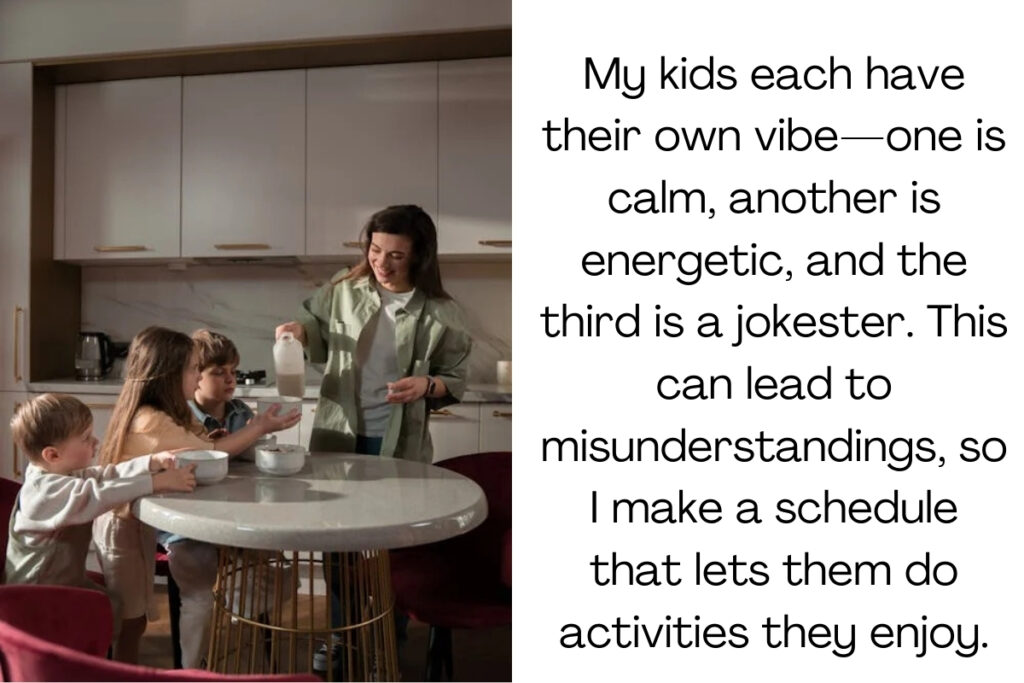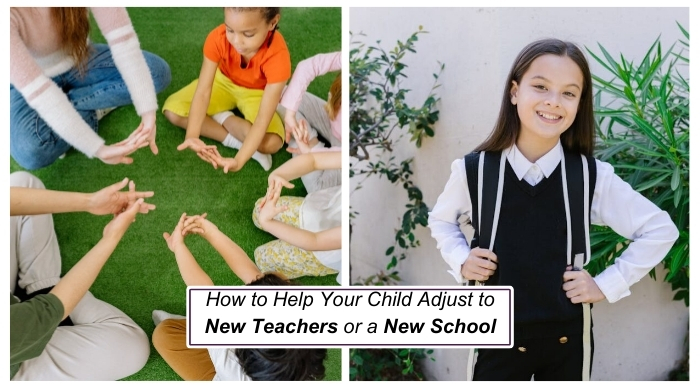7 Proven Strategies from a Child Psychologist to End Sibling Fighting

My aunt often shares stories about their kids throwing tantrums, but no one seems to understand what I’m going through.
As a mother of three energetic kids, I can tell you that sibling squabbles are practically a rite of passage. Whether it’s over toys, screen time, or just who gets the last cookie, the fighting can feel relentless. After countless battles, I decided it was time to seek some expert advice. Here are some proven strategies from child psychologists that have helped bring a bit more peace to our home.
Why Do Siblings Fight? Insights from a Mom of Three
As a mother of three spirited kids, I can say that sibling rivalry is an all-too-familiar part of our daily routine. From the moment they wake up until they finally drift off to sleep, it often feels like I’m living in a battleground.
Siblings often clash due to inherent competition, as children instinctively vie for attention, toys, and even love. I frequently witness my three kids competing for my focus, whether it’s to show off a drawing or share an exciting story. To manage this, I’ve started designating “special time” with each child, ensuring they feel valued even for just a few minutes.

Personality differences also play and significant role in sibling dynamics. Each of my children has a unique temperament—one is calm and reflective, another is a spirited go-getter, and the third is a natural jokester. These contrasting personalities can lead to misunderstandings and disagreements, especially when their play preferences don’t align. I create a schedule that allows each child to engage in activities that resonate with their interests.

Jealousy and frustration often arise in sibling relationships, particularly when one child feels overlooked or unfairly treated. I’ve seen arguments erupt when one child receives a new toy or a special privilege, leading to feelings of resentment. Open communication is crucial in addressing these feelings, so I emphasize fairness and acknowledge each child’s unique strengths. We celebrate achievements together to cultivate a sense of belonging and mutual support.
7 Proven Strategies from a Child Psychologist to End Sibling Fighting
1. Set Clear Rules and Consequences
One of the first things I realized is how crucial it is to set clear rules for my kids. It really helps to sit down with them and talk about what’s acceptable behavior and what isn’t. In our home, respect is key. If one of them shouts or gets physical, we have consequences—like losing screen time or taking on an extra chore.

Kids really thrive on having structure, and knowing the boundaries can make a big difference in reducing conflicts. When they understand what to expect, it creates a sense of security and helps them take responsibility for their actions. Plus, involving them in this conversation makes it a team effort. It’s a great chance to teach them about respect and empathy while reinforcing that their actions have real consequences.
2. Encourage Teamwork
Instead of setting my kids up to compete against each other, I’ve focused on finding activities that promote teamwork. We play board games that require them to work together, and we also tackle family projects as a group. This not only helps them learn to rely on one another, but it also builds a sense of camaraderie that’s so important.

It’s amazing to see how collaboration can change their dynamic. When they work towards a common goal, they start to appreciate each other’s strengths and support each other rather than viewing one another as rivals. Plus, it creates lasting memories and fun moments we all can share. Teamwork really helps them develop essential skills, like communication and problem-solving, while also strengthening their sibling bond.
3. Acknowledge Their Feelings
When the fighting breaks out, I’ve found that stepping back and really listening makes a huge difference. Many times, their arguments come from feeling unheard or undervalued. I encourage my kids to express their feelings openly, which helps them articulate what’s bothering them. For example, if one of them is upset about sharing a toy, we sit down and discuss why that toy is important to them.

Acknowledging their feelings can really diffuse the tension and lead to better understanding among them. It’s all about creating a space where they feel safe to share their thoughts without judgment. This not only helps resolve the immediate conflict but also teaches them valuable skills for handling disagreements in the future. They start to learn the importance of empathy and communication, which strengthens their relationship over time.
4. Teach Conflict Resolution Skills
Instead of constantly jumping in to resolve their disputes, I’ve started teaching my kids how to handle disagreements on their own. We practice phrases like, “I feel frustrated when you…” or “Can we find a solution together?” This approach empowers them to express their feelings and communicate more effectively, which really helps cut down on the number of fights.

It’s been eye-opening to see how much they can resolve when given the tools to do so. Not only does it take the pressure off me, but it also fosters their independence and problem-solving skills. They’re learning that it’s okay to have disagreements and that the key is finding a way to work through them together. This kind of communication lays a solid foundation for their future relationships, teaching them the value of listening and collaboration.
5. Create Individual Time
In a busy household, it’s easy for siblings to feel overlooked. I’ve made it a priority to carve out one-on-one time with each child, whether it’s a quick walk or snuggling up with a book. These little moments of special attention really make a difference in helping them feel valued.

When each child knows they have that dedicated time with me, it can significantly reduce feelings of jealousy, which often spark fights. They get to share their thoughts and experiences without competition for my attention. Plus, it strengthens our bond and gives them a chance to express themselves more openly. It’s amazing how just a few minutes of focused time can create a more harmonious atmosphere at home!
6. Model Good Behavior
As parents, we really are our kids’ first role models. I make a conscious effort to demonstrate conflict resolution in my interactions, whether it’s with my spouse or friends. By modeling how to disagree respectfully, I aim to instill those values in my children.

It’s important for them to see that disagreements can be handled calmly and constructively. I want them to understand that it’s not about avoiding conflict altogether, but about navigating it in a way that’s respectful and solution-focused. This way, they learn valuable life skills that will help them in their relationships, both now and in the future. It’s all about showing them that communication and understanding can go a long way in resolving issues.
7. Celebrate Their Bond
Finally, I really encourage my kids to appreciate one another. During family dinners, we often take turns sharing what we love about our siblings. This little practice of positive reinforcement helps shift their focus from rivalry to support, reminding them that they’re all on the same team.

It’s amazing to see how this simple act fosters a sense of gratitude and connection among them. When they recognize each other’s strengths and unique qualities, it creates a more supportive environment at home. Plus, it teaches them the importance of expressing appreciation, which is such a valuable skill for building strong relationships. Over time, I’ve noticed they become more willing to help and cheer each other on, making our family bond even stronger!
Long-Term Effects of Sibling Fighting
Sibling fighting is a common aspect of childhood that can have profound long-term effects on relationships and emotional well-being. Frequent conflicts can lead to strained relationships; while some siblings grow closer as adults, others may carry resentment into adulthood. This dynamic often hinges on how they learn to resolve conflicts.

Constant fighting can teach poor conflict resolution techniques, leaving children ill-equipped to manage disagreements in other relationships. It’s essential to actively teach kids how to express their feelings and resolve issues amicably.

The effects of sibling rivalry also extend into self-esteem and social skills development. Constant comparisons can lead to feelings of inadequacy, making it vital to celebrate each child’s unique qualities.

Interestingly, sibling fighting can lead to two divergent paths: some children may become conflict-averse, while others might adopt aggressive tendencies.
The Impact of Age Spacing Between Siblings on Their Relationship
As a mother of three, I’ve often pondered how the age gaps between my children affect their relationships. It turns out that age spacing can play a significant role in how siblings interact, bond, and develop their dynamics over time. Here’s a closer look at how age spacing influences sibling relationships.
1. Closer Age Gaps (1-2 Years)
When siblings are spaced just a year or two apart, they often share similar interests and developmental stages. This can lead to:
- Intense Bonding: Close siblings may become best friends, enjoying shared playtime and activities. They often navigate challenges together, which can strengthen their connection.
- Increased Rivalry: On the flip side, the competition for attention and resources can be fierce. In my household, I’ve noticed that my kids, who are just a couple of years apart often bicker more frequently, particularly over toys and privileges.

2. Moderate Age Gaps (3-4 Years)
With a few years in between, siblings may still have overlapping interests, but they also start to develop their unique identities:
- Role Models: The older sibling often takes on a mentoring role, helping the younger one with various tasks, like schoolwork or sports. This can foster a protective bond.
- Less Rivalry: Generally, with this age gap, there’s less direct competition for parental attention, which can lead to a more supportive relationship. I’ve seen this dynamic in my kids; the older ones often enjoy helping out and showing the younger sibling the ropes.

3. Wider Age Gaps (5+ Years)
When there’s a significant age difference, the relationship can be quite different:
- Different Life Stages: Siblings might find themselves in entirely different life phases, which can limit their common interests. The older sibling may be more focused on high school or college, while the younger one is still in elementary school.
- Caring Relationships: Despite the differences, these siblings can form a nurturing bond. The older sibling often takes on a more protective, almost parental role, which can lead to a strong sense of responsibility.
- Fewer Conflicts: With less competition for attention, these siblings might experience fewer arguments and more opportunities for bonding during family activities.

Regardless of age spacing, individual personalities play a crucial role. Some children are naturally more empathetic or adaptable, which can affect how they interact with their siblings. For instance, in my family, my youngest is very social and gets along well with both older siblings, despite the age gaps.
How parents manage sibling relationships can also significantly impact dynamics, regardless of age spacing. Encouraging communication, teaching conflict resolution skills, and facilitating shared activities can help strengthen the bond between siblings of any age difference.






